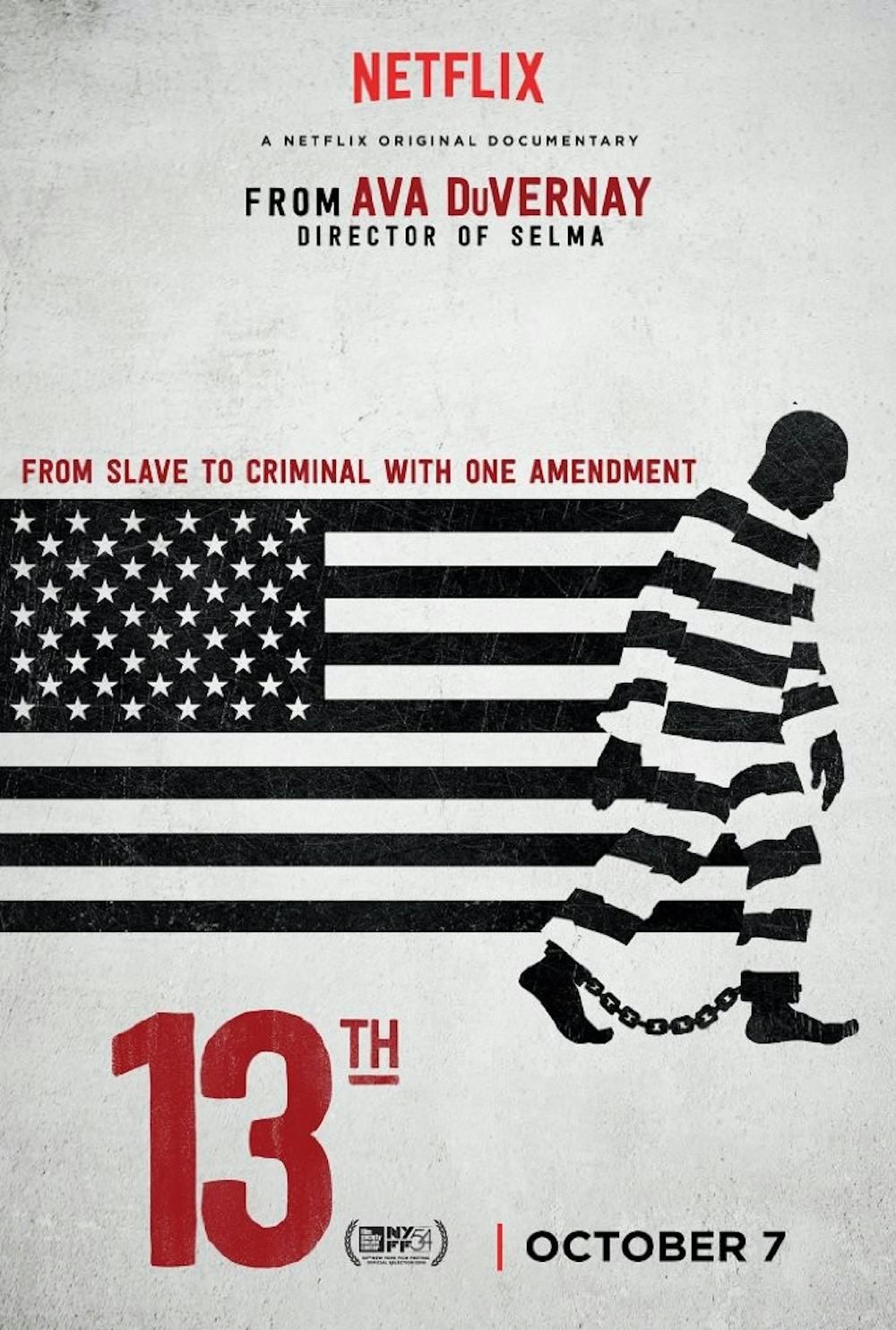"13th"
Release Date: Oct. 7
Duration: 100 minutes
Grade: A
The beginning of October marked the next step in Netflix’s initiative towards providing diverse, original content for its paid subscribers. As of Oct. 7, the streaming service released its second original documentary film this autumn. Ava DuVernay’s “13th” details the long struggle of African-Americans regarding basic civil liberties on the legal level. DuVernay, who just in 2014 directed another racially progressive biopic, “Selma,” articulates this struggle in the presentation of the documentary, the music that bolsters the movie and the opinions of the film’s orators.
The film opens with a statistic presented by President Barack Obama that really sets the stage for the base problem with racism today: It is hidden within our justice system. Obama relays the information that even though the U.S. only harbors roughly five percent of the world’s population, it confines 25 percent of the world’s prison population. This is where, argues the documentary, American values have gone astray.
“One out of four human beings with their hands on bars, shackled, in the world, are locked up here in the Land of the Free,” iterates interviewee Van Jones, a political activist with a focus in racial discrimination.
The documentary then begins to lay out how the country has arrived here, in this state of mass incarceration. Racism never died, to many people’s dismay, urges the film. It has only morphed into something furtive, hidden from the myopia of modern America. The titular standpoint in the movie is that though the 13th Amendment called for the liberation of all African-Americans from slavery, a loophole clause featured in it only worked to perpetuate rank discrimination. The loophole, clarifies the interviewees, lies in the U.S. government’s ability to systemically imprison anyone it deems a “criminal,” a status largely defined by racism. Therefore in this way, slavery not only still exists but is a skeleton in America’s rather large, rather dark closet that constantly resists removal.
On the presentation of the piece, its modern filmography style works well with its time sequences. It marks on problems of the past and intermittently juxtaposes them with their ramifications in the present. In this way, viewers are more easily able to accept the reality of old as it applies to society today.
The soundtrack of the film is especially significant to its message. DuVernay places songs of racial angst over visually engrossing footage of racial violence and protest. Music from such activists as Nina Simone, Public Enemy and Killer Mike helps to accentuate the film’s themes. Moreover, the songs are usually accompanied with typographic lyrics onscreen to really expose the viewer to their relevance in the overall narrative.
Lastly, the work aims to present all sides of the story, which is almost unheard of in documentary filmmaking. Noted Republicans and Republican lobbyists such as Newt Gingrich make substantial cameos, if only to push an alternate opinion than that of the documentarian. The movie gains integrity in this regard.
Two words that could easily be used to describe “13th” are “horrifyingly compelling.” The film stupefies its audience into at least a minute sense of guilt by asserting that they should be doing more to halt this problem. In this way, it is effective. It presents an argument, gives detailed analyses of that argument and pushes its viewer to take a side. For these reasons and more, it deserves a solid A.

